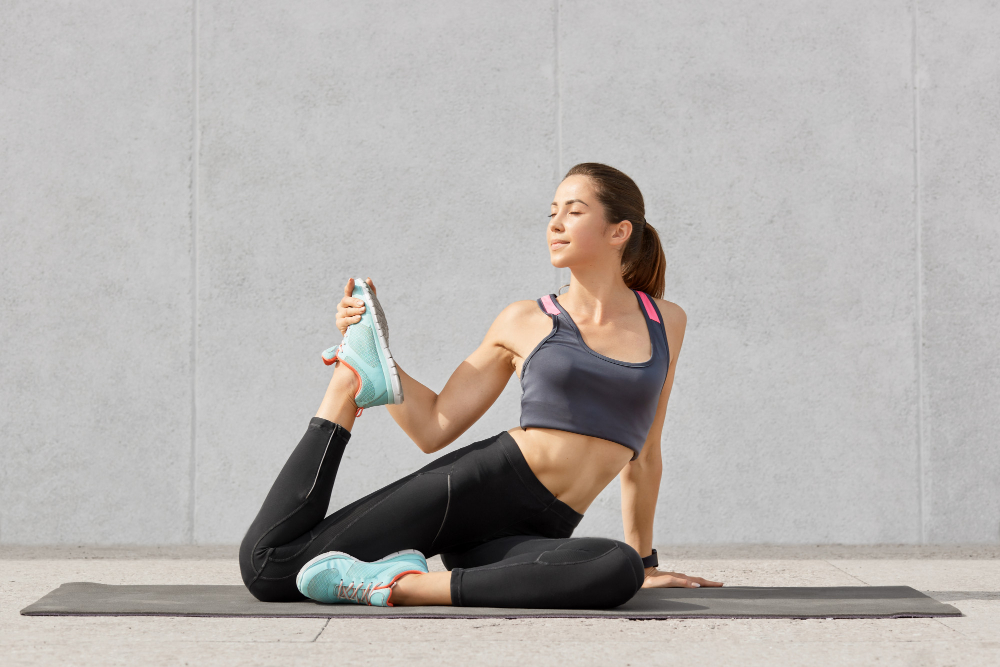In our fast-paced modern world, it’s easy for sedentary habits to take root. Long hours at desks, commutes, and screen time often lead to less movement, impacting our health in subtle yet significant ways. However, the undeniable truth is that a lifestyle built around regular exercise is a cornerstone of overall well-being. It’s not just about hitting the gym; it’s about making movement a fundamental and enjoyable part of your everyday life.
Defining Your “Lifestyle”: More Than Just What You Do
Your “lifestyle” is the sum total of your daily habits and choices. It encompasses what you eat, how much you sleep, how you manage stress, and, crucially, how active you are. These choices collectively shape your physical health, mental clarity, emotional resilience, and even your social connections. When we talk about a “healthy lifestyle,” we’re advocating for conscious decisions that support long-term vitality.
The Power of Exercise: Fueling Your Body and Mind
Exercise refers to structured physical activity performed with the intent of improving fitness, health, or performance. Its benefits are profound and far-reaching:
- Physical Health: Regular exercise is a potent medicine. It strengthens your heart and lungs, helps manage weight, builds stronger bones and muscles, improves flexibility, boosts energy levels, and enhances sleep quality.
- Mental and Emotional Well-being: Beyond the physical, exercise is a powerful mood enhancer. It releases endorphins, natural mood elevators that can reduce stress, alleviate symptoms of anxiety and depression, and improve cognitive function, boosting focus and memory.
The Inseparable Link: Lifestyle Shapes Exercise, Exercise Shapes Life
The relationship between your lifestyle and exercise habits is deeply intertwined. A sedentary lifestyle can create a vicious cycle, making it harder to initiate and stick with exercise. Conversely, consistently incorporating physical activity can trigger a positive ripple effect, inspiring better food choices, improving sleep patterns, and enhancing your overall zest for life.
Making Exercise a Lifestyle: Practical Tips
Transforming exercise from a chore into an integrated part of your lifestyle requires sustainable strategies:
- Start Small, Be Consistent: Don’t aim for immediate marathon training. Begin with manageable goals, like a 15-minute brisk walk daily. Consistency trumps intensity in the long run.
- Find Your Joy: Exercise doesn’t have to be boring. Explore activities you genuinely enjoy – dancing, swimming, cycling, team sports, hiking, or even active video games. When it’s fun, you’re more likely to stick with it.
- Set Realistic Goals: Achieve small, regular milestones. Celebrating these successes keeps you motivated to continue.
- Schedule It: Treat your workout like any other important appointment – put it on your calendar and commit to it.
- Embrace “NEAT” (Non-Exercise Activity Thermogenesis): Look for opportunities to move throughout your day. Take the stairs instead of the elevator, walk during phone calls, stand while working, do active chores, or park further away. Every bit of movement adds up.
- Buddy Up: Exercise with a friend, family member, or join a group. Accountability and social connection can make workouts more enjoyable and help you stay on track.
- Listen to Your Body: Rest is just as important as activity. Avoid overtraining and allow your body time to recover to prevent injuries and burnout.
Beyond the Gym: Active Living Every Day
True integration of exercise into your lifestyle means recognizing that movement isn’t confined to a gym or a structured workout session. It’s about cultivating an active living mindset where physical activity is a natural and intuitive part of your daily routine. This could mean walking or cycling for errands, incorporating active play with children or pets, or finding ways to move during breaks at work.
Consistency is Key to Lasting Change.
The profound and lasting benefits of exercise – from improved physical health and mental well-being to increased energy and vitality – are unlocked through consistent effort, not sporadic bursts. It’s a journey, not a destination, where small, regular steps build towards a lifetime of healthier, more active living.
FAQs
1. What exactly does “active lifestyle” mean, beyond just formal exercise?
An “active lifestyle” means integrating more movement and physical activity into your daily routine, even outside of structured workouts. It includes choices like taking the stairs instead of the elevator, walking or cycling for short commutes, standing while working, doing active chores, playing actively with children or pets, and generally seeking opportunities to move throughout the day. It’s about reducing sedentary time and making movement a natural part of living.
2. How does regular exercise impact my mental and emotional well-being, not just physical health?
Regular exercise has profound positive impacts on mental and emotional well-being. It helps reduce stress, acts as a natural antidepressant by releasing endorphins (mood-elevating neurochemicals), can alleviate symptoms of anxiety and depression, improves sleep quality, and boosts cognitive function like focus and memory. It’s a powerful tool for overall mental resilience and mood regulation.
3. I have a very busy schedule. How can I possibly fit exercise into my lifestyle?
Fitting exercise into a busy schedule requires creativity and consistency. Start small: aim for 10-15 minute bursts of activity, like a brisk walk during a lunch break or a quick home workout in the morning. Schedule it like an important appointment. Look for ways to integrate movement into your day (e.g., walk part of your commute, take the stairs). Consider high-intensity interval training (HIIT) for efficient workouts, and remember that consistency with short sessions is more effective than sporadic long ones.
4. What are some common mistakes people make when trying to start an exercise routine?
Common mistakes include starting too intensely too soon, which can lead to injury or burnout. Setting unrealistic goals that are hard to maintain is another pitfall. Many people also choose activities they don’t enjoy, making it hard to stick with the routine. Neglecting rest and recovery, failing to listen to their body’s signals, and not making exercise a non-negotiable part of their schedule are other frequent errors.
5. How important is consistency compared to intensity when it comes to long-term health benefits?
When it comes to long-term health benefits, consistency is far more important than intensity, especially for beginners or those integrating exercise into their lifestyle. Regular, moderate activity consistently over time yields greater and more sustainable benefits for cardiovascular health, weight management, mood, and overall well-being than sporadic, high-intensity bursts followed by long periods of inactivity. It’s about building lasting habits.
Integrating consistent exercise into a holistic lifestyle is the most powerful investment you can make in your physical, mental, and emotional well-being. It’s not about achieving perfection, but about making deliberate choices to move more, nourish your body, and reduce stress, fostering lasting vitality and resilience. If you’re ready to embrace a more active and fulfilling life, or need guidance on developing a sustainable fitness plan, we invite you to connect with our healthcare professionals. Schedule an appointment today, and visit our website at https://scclittleelm.com/ to begin your journey towards a healthier, more energized you.

